For most people, tattoos are a form of self-expression. But for one man, ink became a life-changing solution after a devastating accident left him without an eye. Instead of opting for a traditional glass prosthetic, he took a different path—one that led him to a skilled tattoo artist with the ability to create hyperrealistic tattoos.
A Tragic Accident That Changed Everything
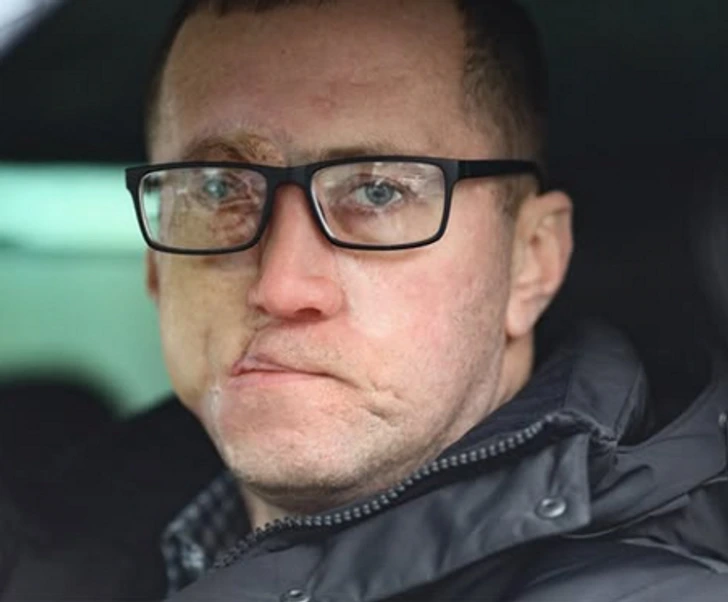
Pavel, a young man with a bright future, suffered a horrific car accident that left him with severe facial injuries. His nose was nearly destroyed, and his right eye was beyond repair. Reconstructing his face would require a series of complex medical procedures, but one of the biggest challenges was how to deal with his missing eye.
Doctors initially explored the possibility of saving what was left of his damaged eye. However, the risk of infection spreading to his healthy eye was too high. The safest option was to remove it entirely.
Pavel accepted the decision with courage, saying:
“I don’t hold on to things that don’t work. It’s better to get rid of something potentially dangerous than to risk losing my other eye too.”
But once the procedure was done, he was left with an important question—how should he replace his missing eye?
From Surgery to Art: A Unique Solution Emerges
Traditionally, people in Pavel’s situation turn to glass prosthetic eyes. But he wanted something different—something that wouldn’t require daily removal or ongoing adjustments.
That’s when doctors introduced him to a highly skilled tattoo artist specializing in hyperrealistic medical tattoos. She had already made a name for herself by helping burn victims, breast cancer survivors, and alopecia patients reclaim their confidence through tattoo artistry.
However, this project was different. She wasn’t just restoring eyebrows or camouflaging scars—she was about to create the illusion of a realistic eye on a flat surface.
This would become one of the most challenging tattoos of her career.
The Artist’s Preparation: A Year of Meticulous Planning
A hyperrealistic tattoo isn’t something that happens overnight. The artist dedicated a full year to studying and preparing for this groundbreaking piece.
Her process included:
- Analyzing old photos of Pavel to match his original eye color and shape.
- Developing a custom pigment palette that could replicate the natural shading of an eye, ensuring the sclera (the white part) didn’t look unnaturally bright.
- Practicing on artificial skin to simulate the texture of scar tissue and skin grafts, testing how ink would blend.
- Consulting with doctors to ensure that tattooing wouldn’t interfere with his healing process.
- Sketching and refining designs over and over again to get the illusion of depth just right.
While the artist prepared, Pavel adjusted to his new face. He remained patient, even joking:
“While you’re practicing, I’ll get used to my new nose!”
Despite the curiosity of strangers, his friends and family stood by him, treating him no differently. Their support gave him the strength to embrace the journey ahead.
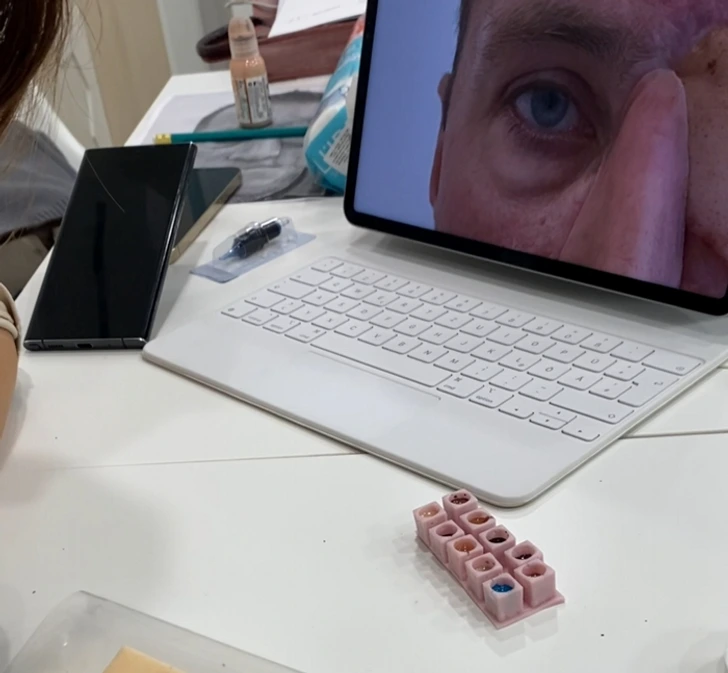
The Big Day: Creating a Realistic Eye with Ink
After months of preparation, the day finally arrived. Pavel stepped into the tattoo studio, knowing this was a permanent transformation.
The artist carefully mapped out the placement of the eye tattoo, ensuring that it:
- Aligned naturally with his facial structure.
- Considered the shadows and highlights needed to create depth.
- Worked with the texture of his skin grafts and scars, ensuring the ink settled correctly.
The first outlines were drawn, and within a few hours, the shape of an eye began to emerge. When the artist handed Pavel a mirror, he smiled and said:
“Wow! It actually looks like something!”
There was still work to be done—adding highlights, refining details, and perfecting the illusion—but the transformation had begun.
The Power of Medical Tattoos: A Growing Trend
Pavel’s story isn’t just a remarkable example of tattoo artistry—it’s part of a growing movement where tattoos serve medical and emotional purposes.
Some of the most impactful medical tattoo techniques include:
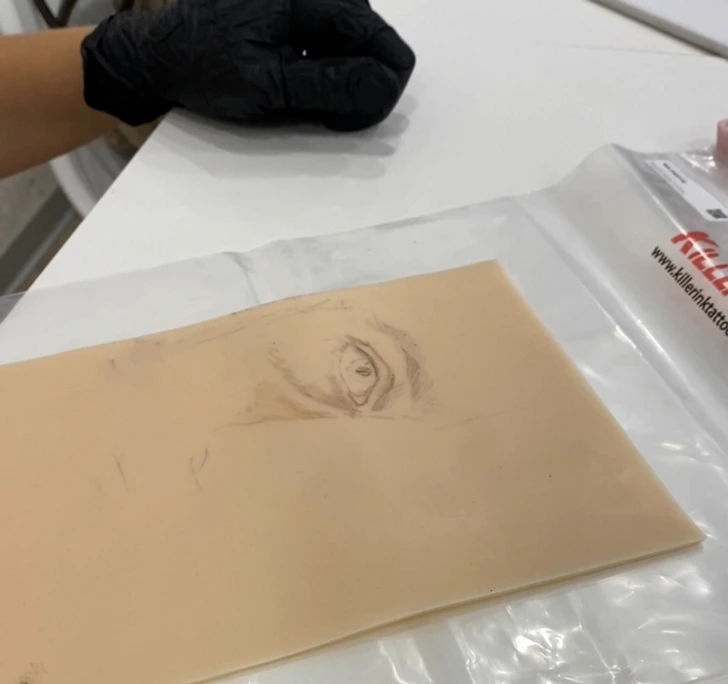
- Scar camouflage tattoos, which help burn victims and surgery patients feel more comfortable in their skin.
- 3D nipple tattoos, which help breast cancer survivors reclaim their bodies after mastectomies.
- Eyebrow tattoos, providing a solution for alopecia patients and chemotherapy survivors.
- Skin pigmentation correction, helping people with vitiligo and birthmarks achieve a more even skin tone.
The use of hyperrealistic tattoos in medical recovery is revolutionizing self-confidence, showing that tattoos are not just about self-expression—they’re about self-restoration.
More Than Ink: How Tattoos Can Heal Beyond the Surface
Pavel’s journey highlights an important truth—tattoos have the power to change lives.
Beyond their visual appeal, medical tattoos help individuals regain control over their bodies after trauma. Studies show that people who undergo these procedures experience:
- Increased self-esteem
- A renewed sense of identity
- Emotional healing after a traumatic experience
For many, these tattoos shift the focus from loss to empowerment, allowing them to move forward with confidence.
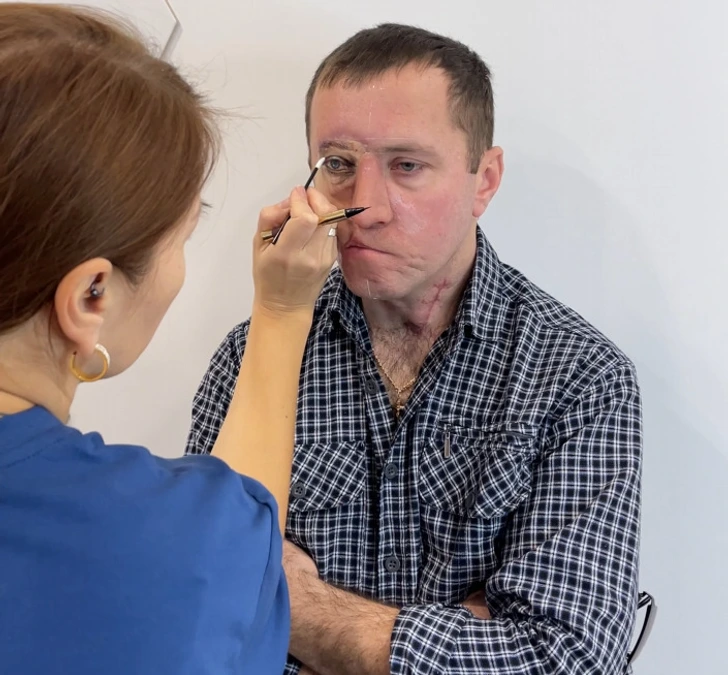
Conclusion: A Story of Strength, Art, and Transformation
Pavel’s story is a testament to resilience, innovation, and the transformative power of art.
With the help of a brilliant tattoo artist, he didn’t just replace his missing eye—he reclaimed his confidence.
His journey serves as a powerful reminder that true beauty isn’t about perfection—it’s about embracing what makes you unique and finding strength in the face of adversity.
In the world of medical tattoos, artists aren’t just creating inked designs—they’re restoring hope, identity, and dignity.
KING CHARLES’ HEALTH TAKES A TURN FOR THE WORSE: REPORTS SUGGEST AN ‘INEVITABLE END
Even though it might seem like King Charles is getting better, experts say he is still very ill, and the palace is preparing for his funeral.
The plan for dealing with the king’s passing, known as Operation Menai Bridge, is already in place. This plan is being prepared because there is a chance the 75-year-old king, who is fighting cancer, might not recover.
Read on to find out why the plans for the king’s funeral are moving quickly!
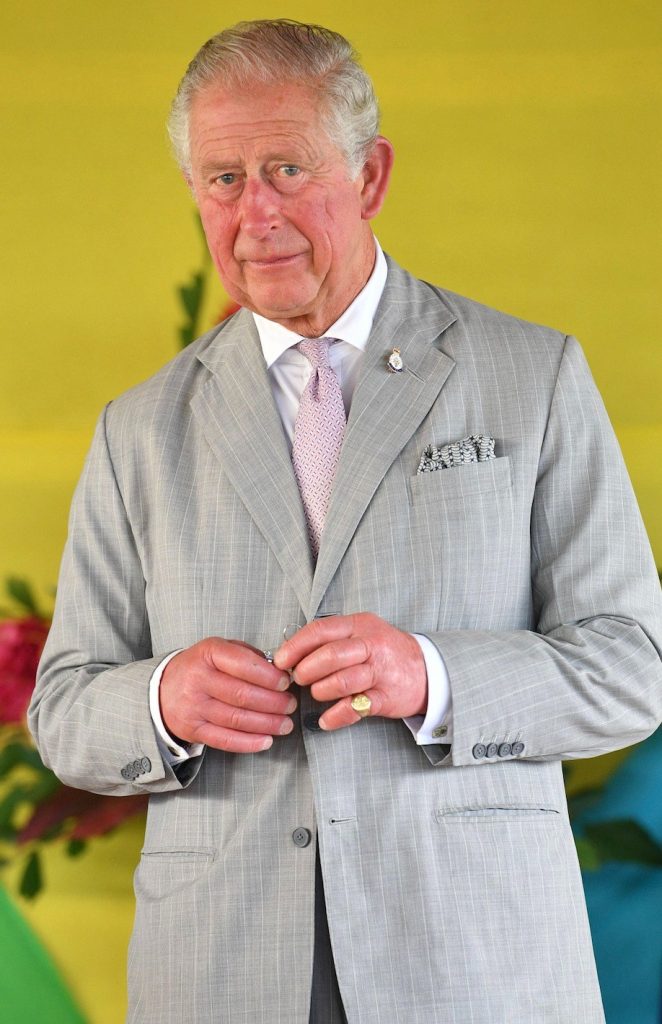
When Queen Elizabeth II became queen in 1952, preparations for Operation London Bridge began soon after. This plan covered everything that would happen after her death, including how to announce it, the period of mourning, her state funeral, and how King Charles III would become king.
Despite just becoming king in 2022 after the passing of Queen Elizabeth II, Charles III’s time on the throne has been overshadowed by his health issues. As royal experts report that he is still very sick, preparations for his funeral are moving forward. This situation is bringing urgency to the plans, known as Operation Menai Bridge, which outline the steps following the king’s death.
In January 2024, less than a year after his coronation in May 2023, King Charles underwent a procedure to treat an enlarged prostate. However, by February, the palace announced that he had been diagnosed with cancer.
In a statement shared on February 10, 2024, through the royal family’s social media, Charles expressed his gratitude for the support and well wishes he received, noting that such kind thoughts are a great comfort to those affected by cancer.
In his statement, King Charles also mentioned how sharing his cancer diagnosis has helped raise awareness and support for cancer organizations. He expressed deep admiration for the work of these organizations, which has grown stronger due to his personal experience with the illness.
During King Charles’s treatment for cancer, the king’s eldest son, Prince William, took on additional royal duties. He also provided emotional support to his wife, Kate, who announced her own cancer diagnosis in March 2024.
A source reveals that Prince William has taken on more responsibilities and is now involved in many of the decisions, as King Charles continues to struggle with his health.
The king has recently resumed public appearances, but he’s finding it difficult. According to the source, his appearances are shorter than usual. After each engagement, he is quickly transported by helicopter and then needs to rest.
The source also notes that, despite it being an uncomfortable topic, the plans for King Charles’s funeral are being prepared due to his worsening health.
The Daily Beast reports that there’s growing concern in the palace, with friends finding it hard to stay positive. A close friend said, “Of course, he is determined to beat it and they are doing everything they can, but he is really very unwell. More than they are letting on.”
Operation Menai Bridge, the plan for the king’s death, is being regularly updated, similar to the plan for Queen Elizabeth II’s passing. This plan ensures a smooth transition of power and includes specific codewords for all members of the royal family.
When the time comes, the late king will lie in state at the Palace of Westminster for mourning, and he will likely be buried in the royal vault at King George VI Memorial Chapel in Windsor Castle.
The palace is preparing a funeral fit for a king. “The palace may seem to suggest that Charles is improving, but he’s still very sick,” an insider told In Touch in an August 2024 interview. “Officials are making sure the funeral meets his wishes and proper protocol.”
Let us know what you think about this story and share it with your friends to see what they think!

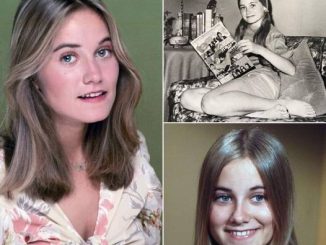
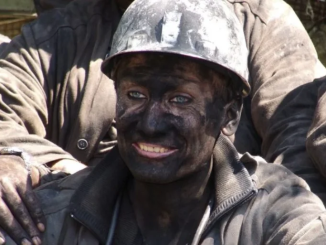
Leave a Reply